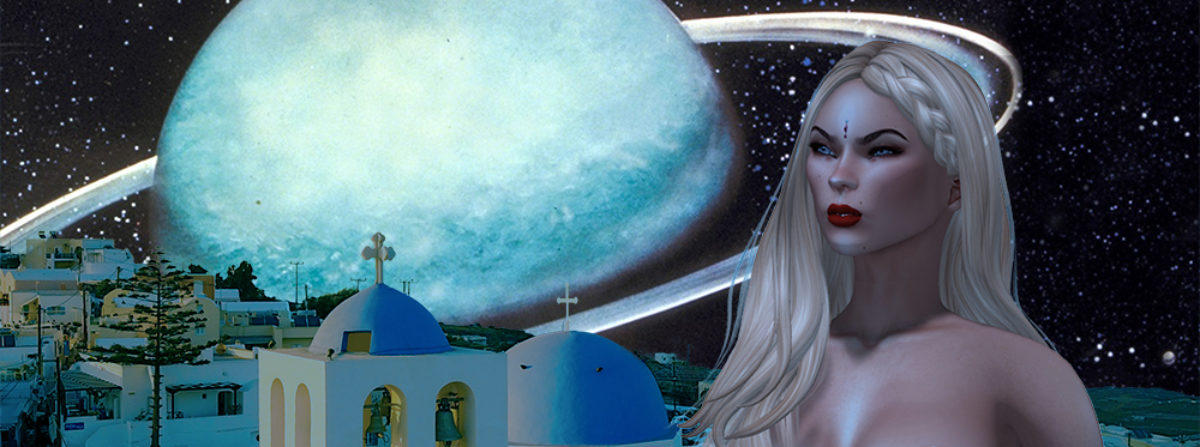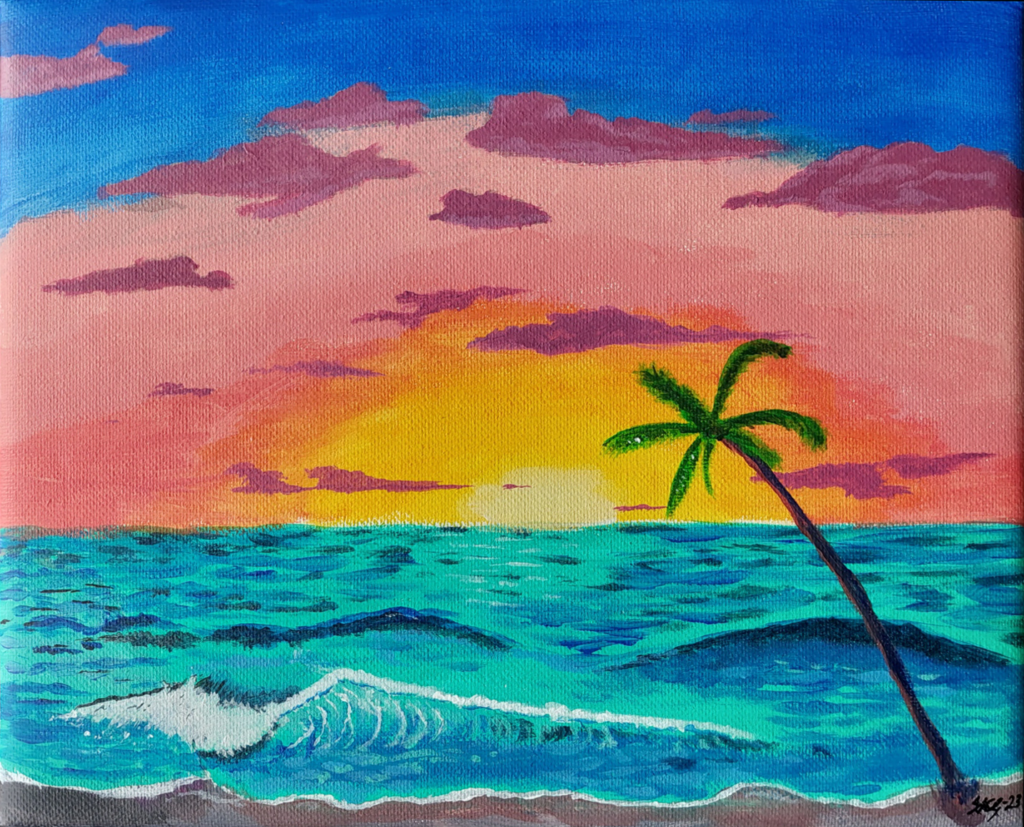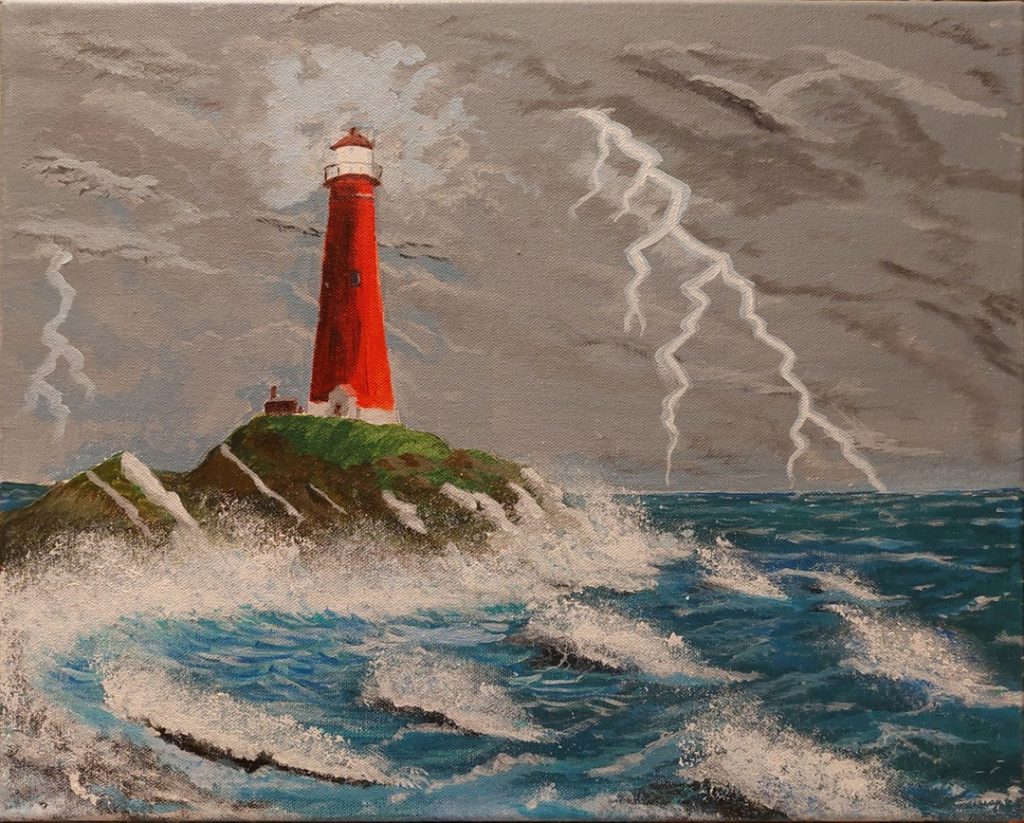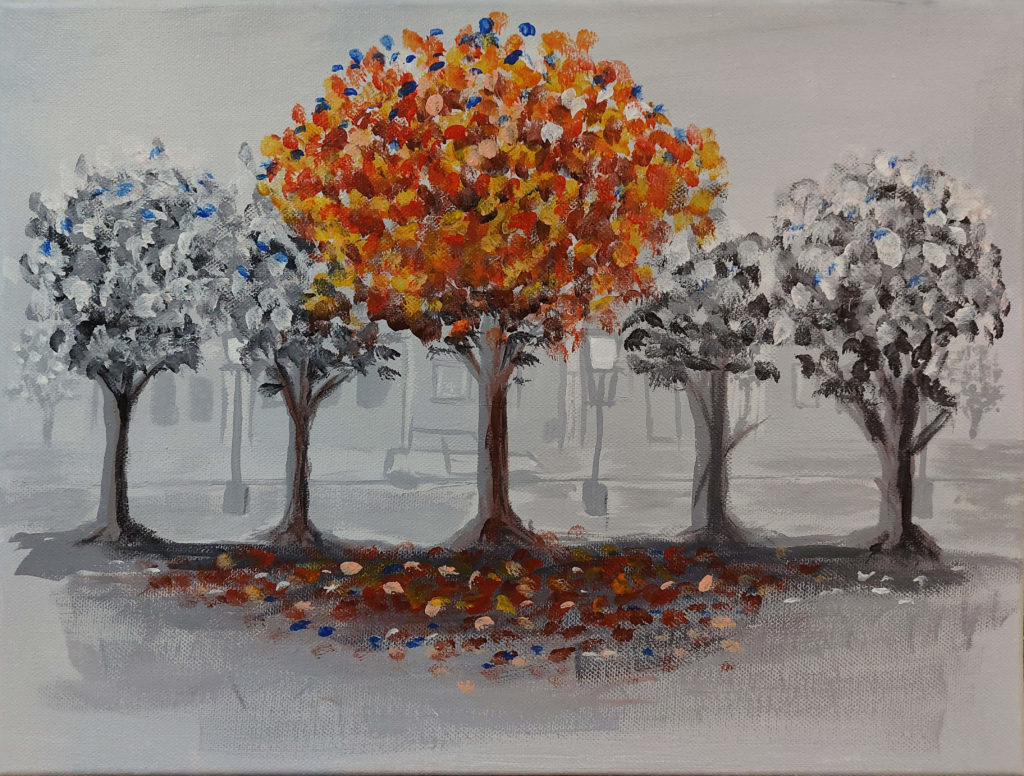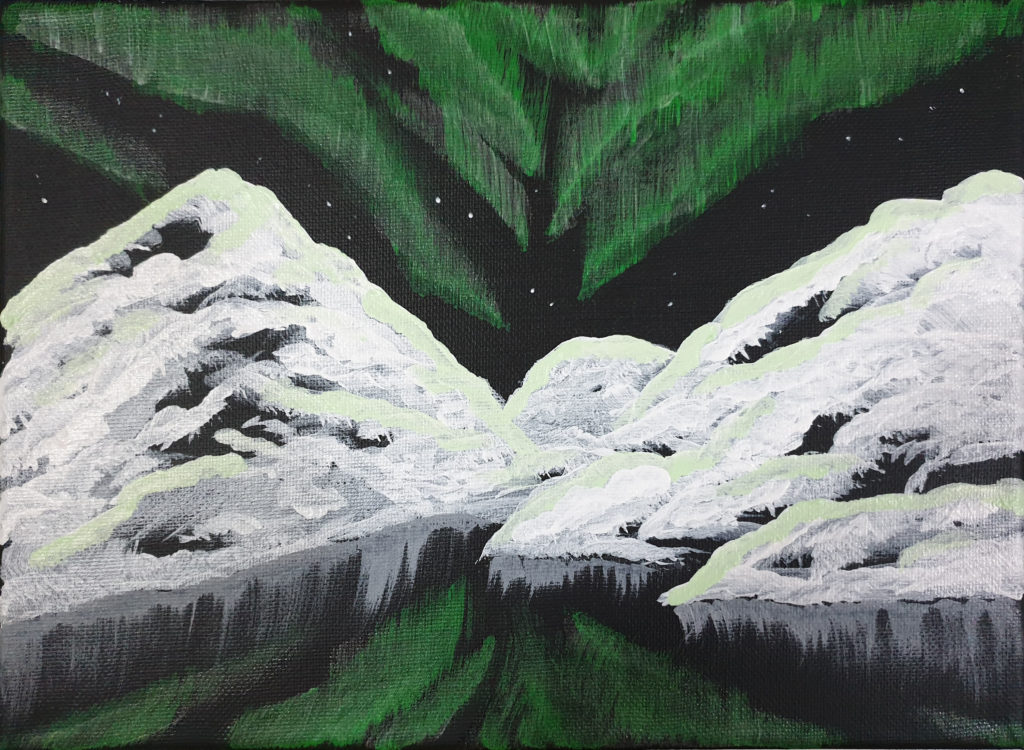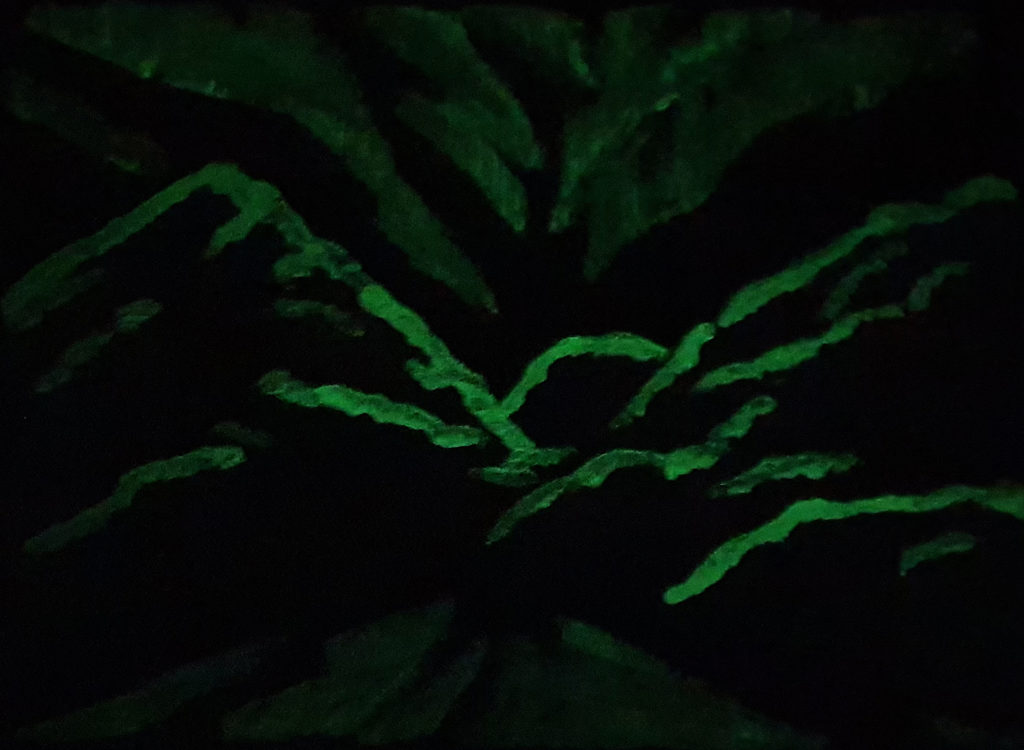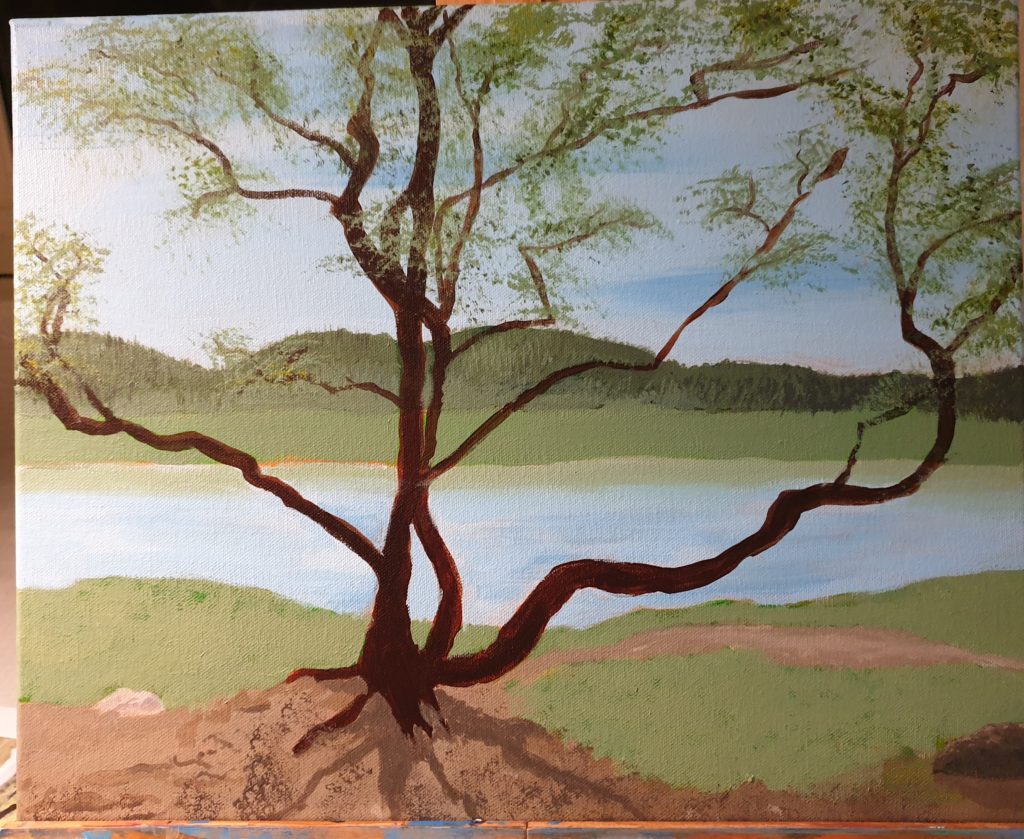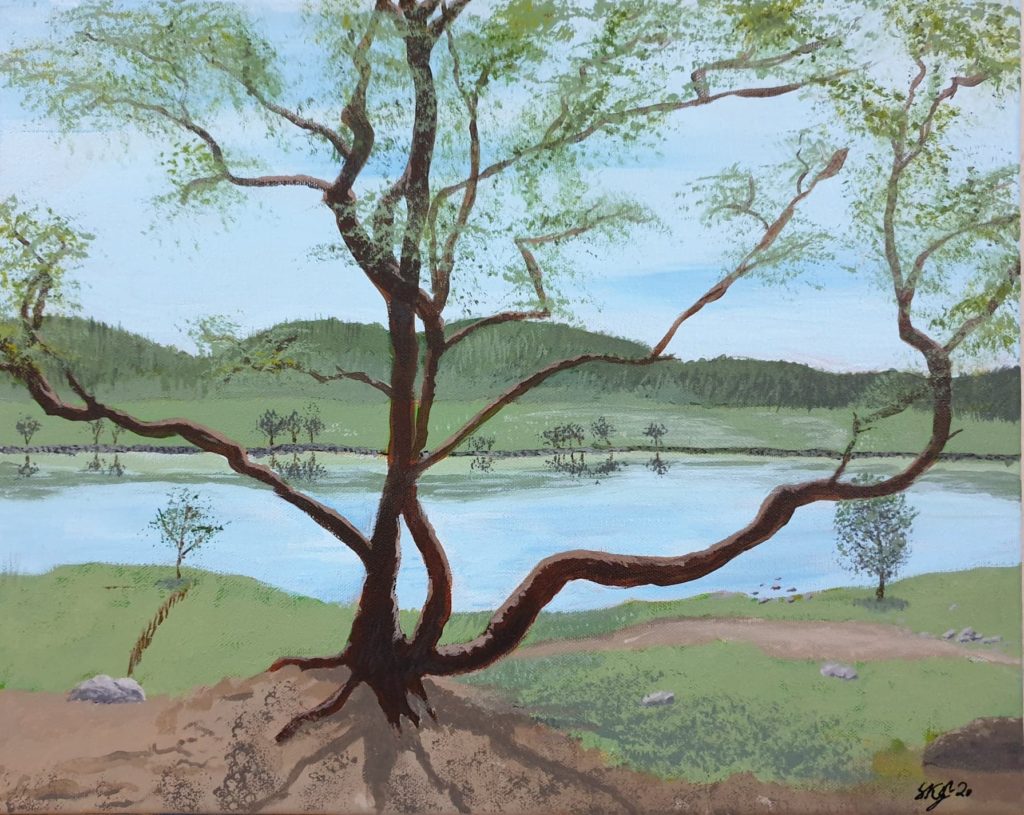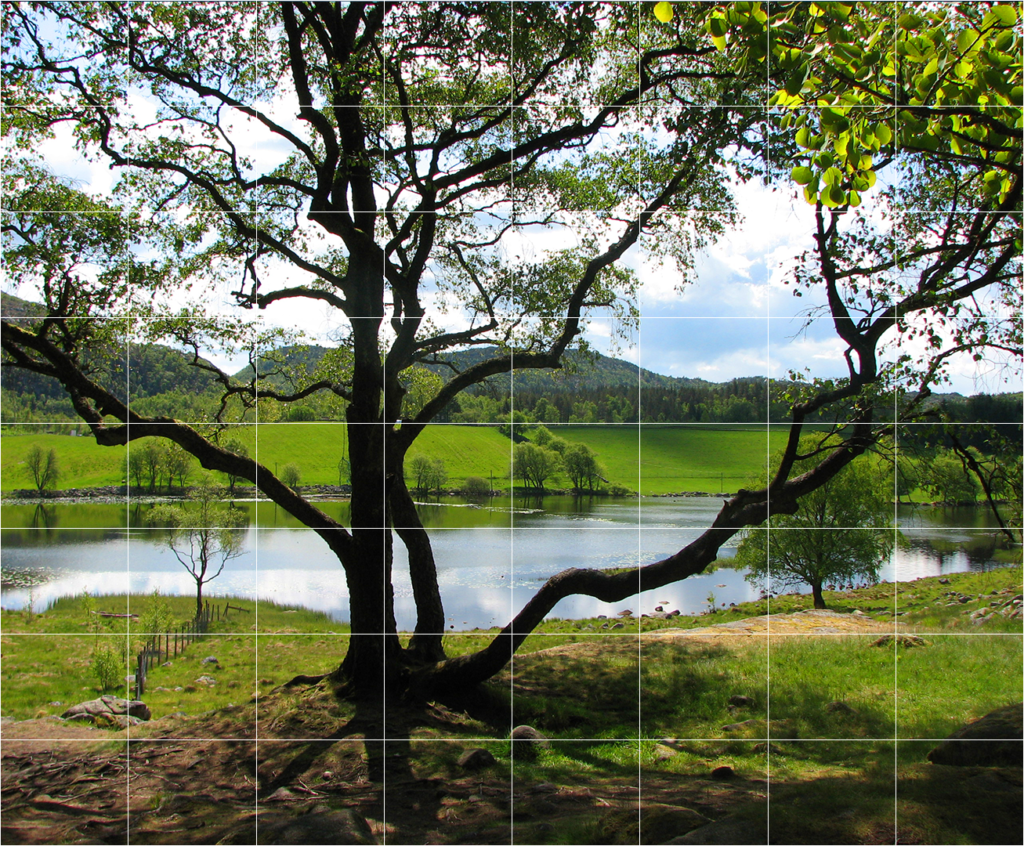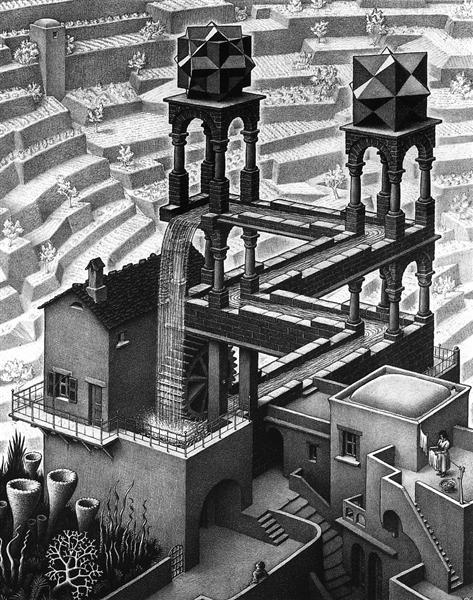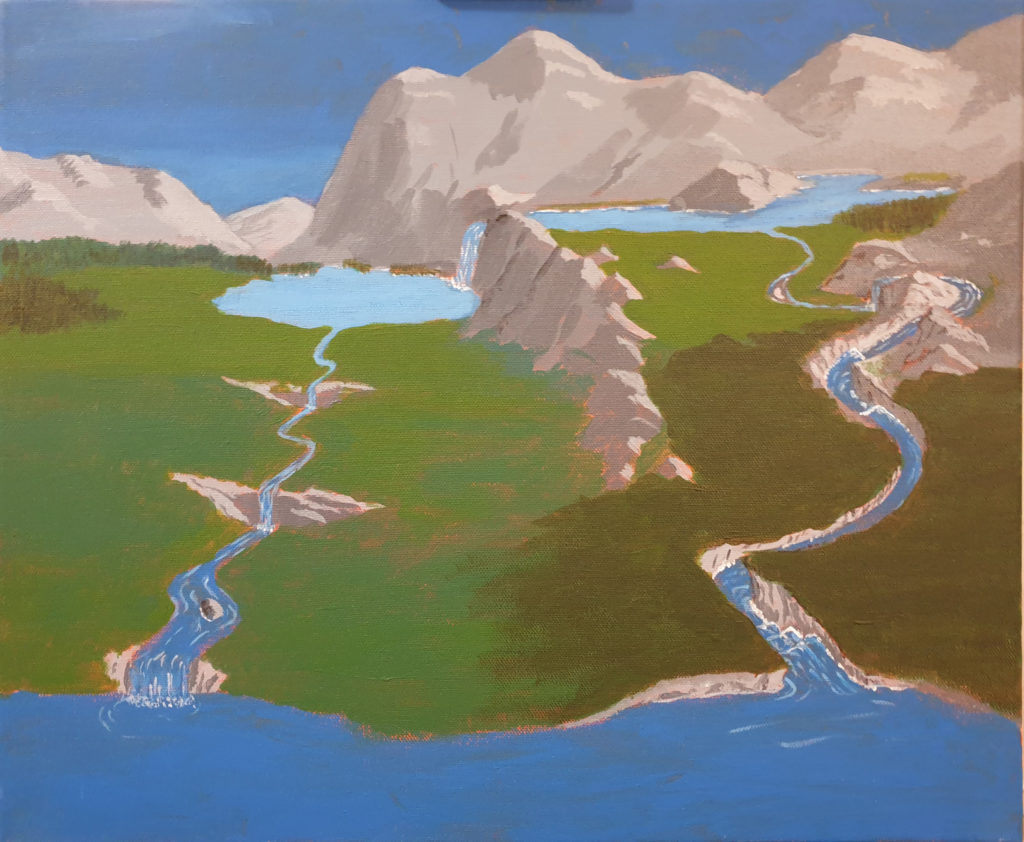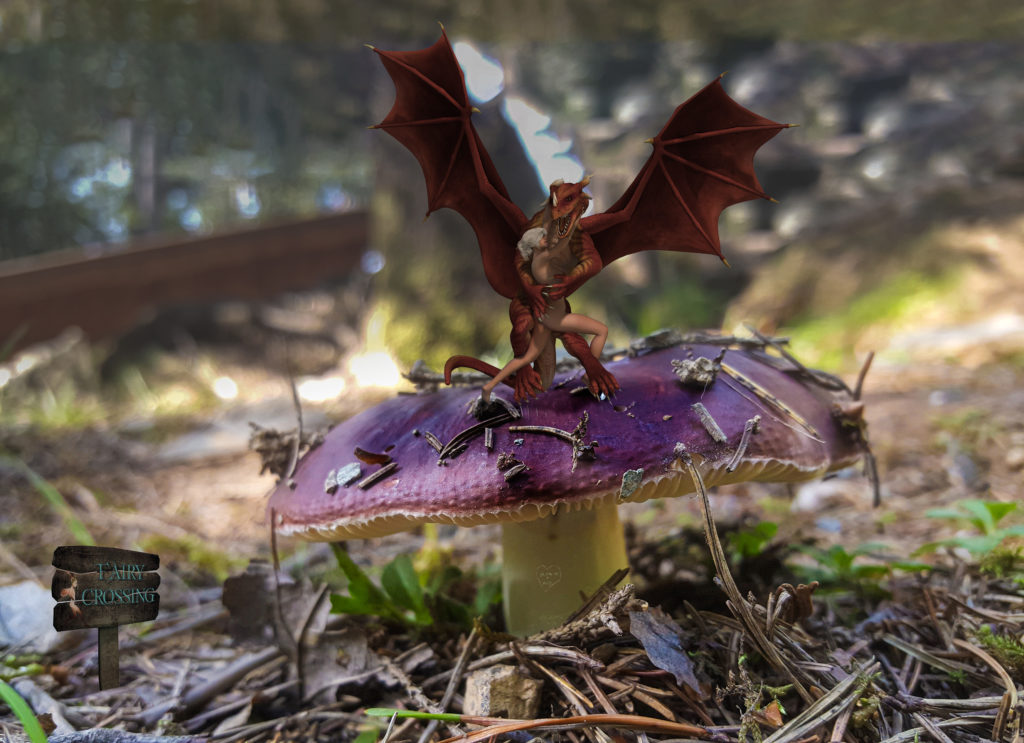It’s been an exciting start to the painting class this year, and I couldn’t resist the urge to embark on a personal artistic journey during our first session. While our teacher is always a valuable resource for guidance and does suggest themes to paint, I felt compelled to follow my own muse this time around.
My inspiration? A picturesque scene featuring a solitary lighthouse perched at the edge of a series of interconnected islets, linked by a quaint road and bridge. With a photo providing the needed inspiration, I dove into the world of acrylics, eager to bring this vision to life on canvas.
The initial stages of the painting involved blocking in the main colours, defining the vast expanse of the sky, the tranquil waters of the sea, and the main shapes of the islets and bridges. And the lighthouse, of course. However, as any artist knows, the creative process is never without its challenges. Sometimes a little break is needed to see the work in process from a little distance, both physically and time-wise.
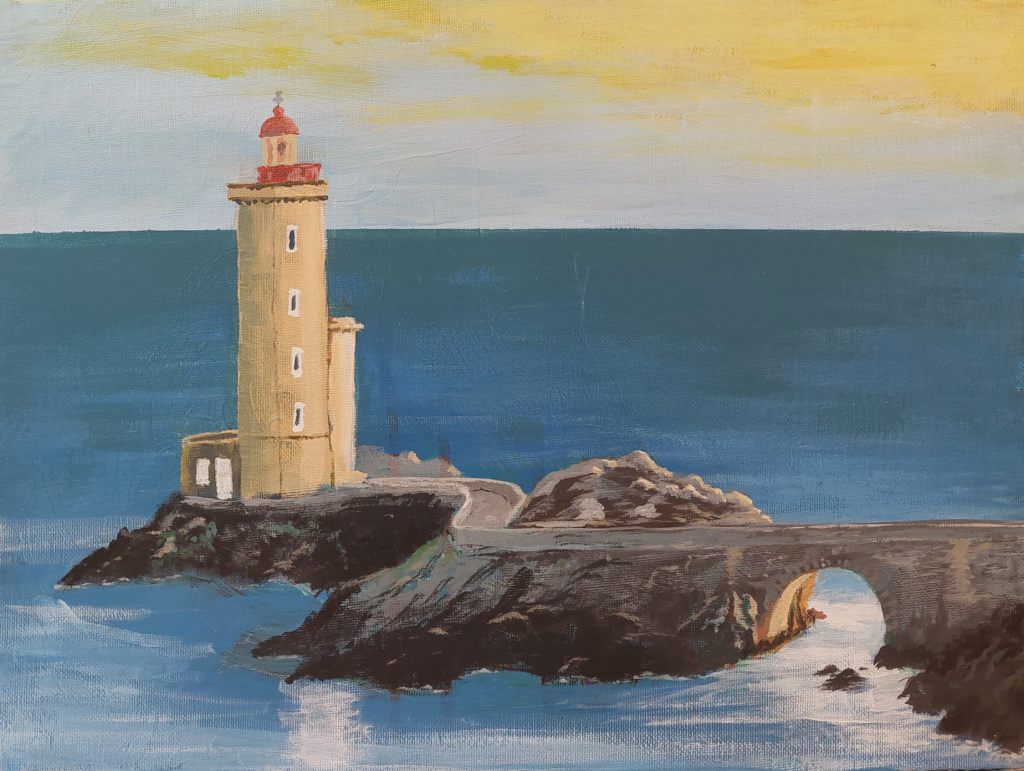
Upon revisiting the painting after a brief hiatus, I realized the importance of refining the composition. The horizon demanded a straighter, more horizontal alignment, while the hues of the sea and the light in the sky needed to be subtly muted to evoke a sense of serene tranquillity. The rough outlines of the islets needed to be better defined, and I got some details in to make it easier to see the real shapes and figure out the placement of the lighthouse and bridge.
Ah, but the true heart of the painting emerged with the depiction of the lighthouse itself. Time was spent meticulously crafting its structure, ensuring that every colour and detail resonated authentically with the scene I envisioned. Or at least, making it look good. While not an exact replica of my reference, I aimed to capture the essence and spirit of this wonderful beacon.
With the lighthouse taking the main stage, attention turned to enhancing the surrounding landscape. Additional details were painstakingly added to the islets, bridges, and roads, imbuing them with a sense of rustic charm and character.
In the end, the road led the eyes from the bridge towards the lighthouse, where it rose towards the sky.
